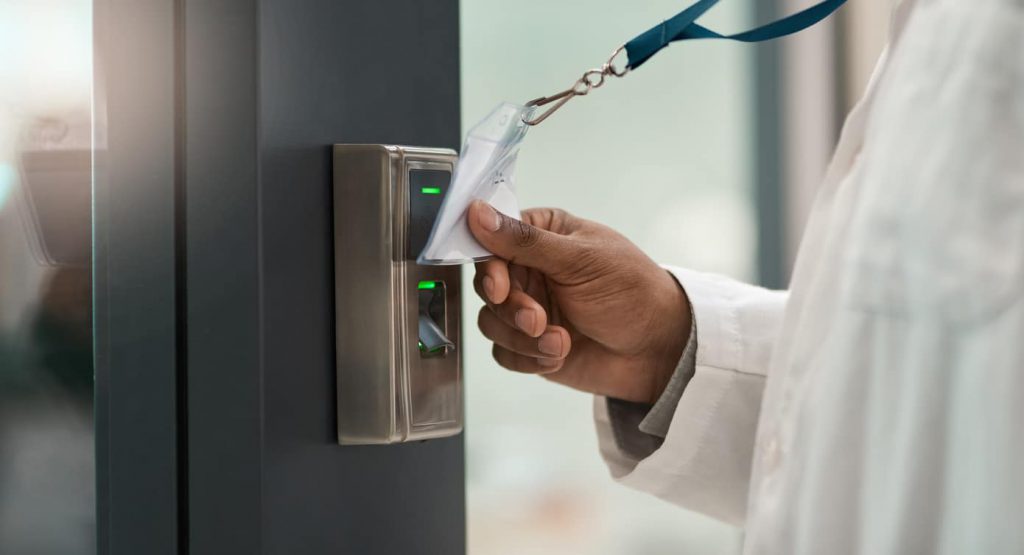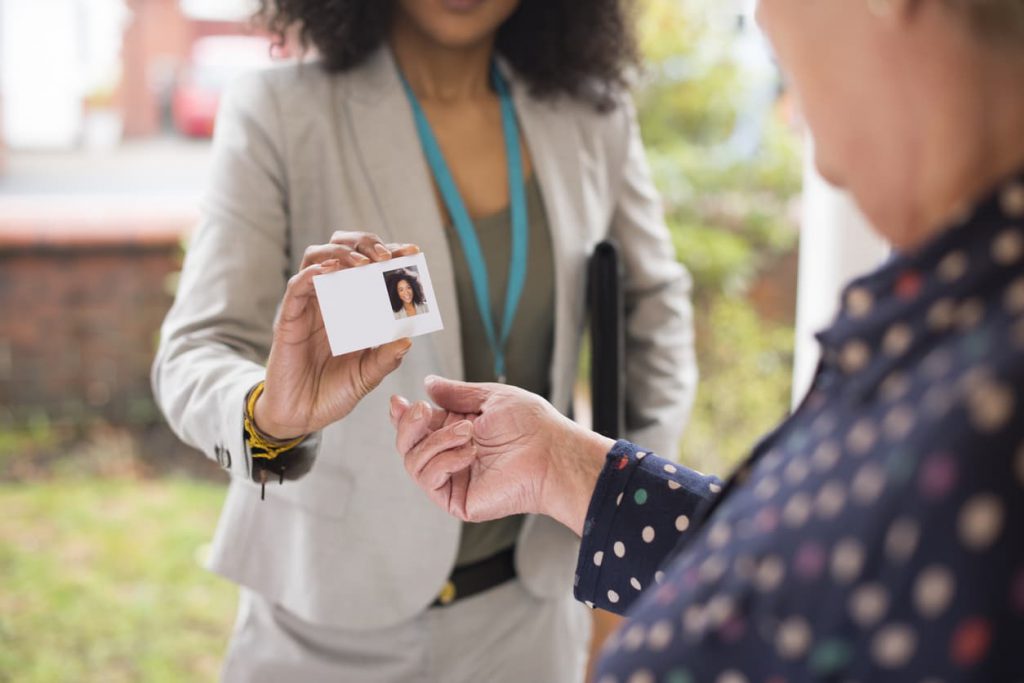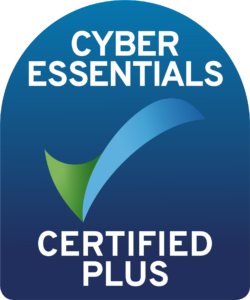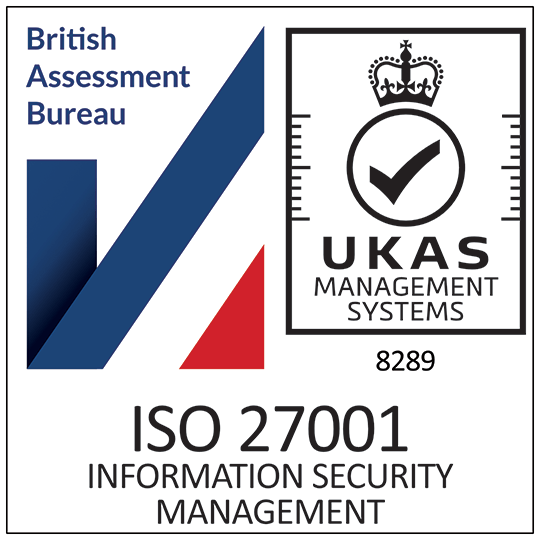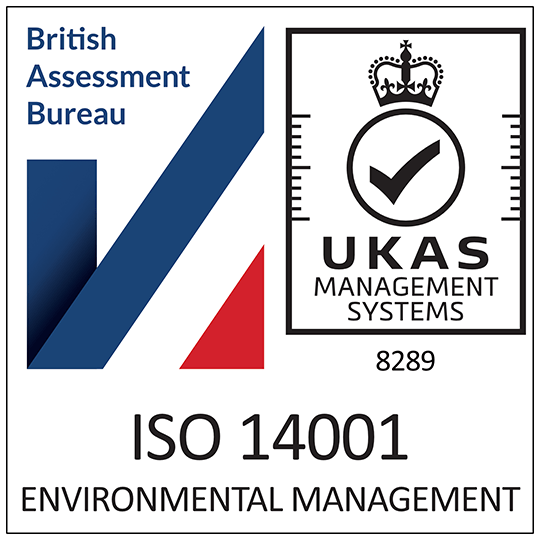Securing your premises while allowing employee access can prove a tricky balancing act. But factor in additional controls for employees with different clearance levels and things become even more confusing.
To help you maximise security without impeding staff access, we’ve put together this useful resource covering key considerations and practical advice. Use the links below to navigate or read on for the full guide.
Quick Links
- Why Access Management is Important for Staff with Different Clearance Levels
- Tips for Managing Multi-Level Employee Access
- The Benefits of Key Cards When Managing Employee Access
Why Access Management is Important for Staff with Different Clearance Levels
While many organisations can get away with a single access point on the main entrance of their premises, others need additional controls to limit access for those with the right clearance. And getting this right is important for lots of reasons, including:
- Data security – organisations accrue more data than ever, and when it comes to such digital assets, security is paramount. Limiting the number of people who can access specific data points is just one way to optimise security while ensuring total accountability and control.
- Privacy and confidentiality – from senior managers to HR teams, there are times when departments need extra measures to guarantee privacy and confidentiality. Access controls allow for open discussion away from prying eyes and ears.
- Employee safety – if you have hazardous machinery or chemicals on your premises, it’s vital that access is only available to those with the right training and PPE. A key card access point is an effective way to support the health and safety of your staff.
- Equipment safeguarding – whether it’s a server room or a laboratory, there are instances when it’s necessary to safeguard expensive kit from untrained employees. Access controls allow this, maximising the safety and security of physical assets.
- Fire safety and evacuation planning – another advantage of additional access control within your premises is fire safety and evacuation route planning. The ability to track who is where within the building adds a degree of safety when planning for emergencies – essential if you manage a large premises with multiple areas.
This isn’t a complete list but does offer helpful insights into why a business may need additional access controls. Consider the needs of your premises to decide if enhanced multi-level employee access could be of benefit.

Tips for Managing Multi-Level Employee Access
Assigning access levels to employees can be difficult. On one hand, you don’t want to overly limit their movements, making the workplace feel unwelcoming while throwing up unnecessary barriers. But on the other, you need to maintain the overall safety and security of your business.
To help you get the balance right, here are a few practical tips:
- Involve line managers in access talks – as a senior manager or chief executive, it can be hard to discern where additional access controls are needed, and who to grant permissions to. Talk to department leads about the requirements of their team to get access controls right, so you can begin to map who needs access.
- Minimise barriers where possible – generally, the fewer access barriers within your business, the better. Where possible, design your space in such a way as to limit access controls, ensuring that general staff have a pleasant, accessible, and user-friendly place to work.
- Group staff with similar access levels – this may go without saying, but it’s helpful to group staff who share similar access clearance within the same office or building. This reduces movement and complexity, ensuring that staff aren’t constantly tapping access points as they move from one space to another through the building.
- Invest in software to oversee access controls – if your business needs multiple employee access levels, do yourself a favour and invest in software that helps to manage the system. A centralised interface, managed by HR personnel, facilitates complete control and monitoring of employee access, so you can track time, movement and entry and exits in one do-all system.
- Communicate access planning with the wider team – your staff won’t take kindly to the sudden appearance of access barriers in the workplace if the reasoning isn’t communicated to them. Keep teams up to date and make sure everyone is aware of their access level, so there are no mishaps or points of contention.
- Invest in key cards, fobs, or mobile access controls – controlling access is one thing, but you need to ensure that staff can still move through the building quickly and safely. Keypads are slow, unhygienic and offer limited functionality, so we’d recommend a key card or fob system for enhanced security and efficient access. Mobile access controls are also on the rise but may require a larger investment and a longer onboarding period.

The Benefits of Key Cards When Managing Employee Access
Electronic key cards are among the best ways to control employee access on your premises. They offer a range of benefits over fobs, keypads, or codes, including:
- Can serve concurrently as employee ID – key cards have the distinct advantage of being fully customisable, so they can serve as employee ID while also allowing access control. Everything from company logos and employee photos to clearance level information can be added to a key card, making them a practical solution for a range of applications.
- Offer hands-free electronic access for optimal hygiene – access cards either feature a magnetic stripe or contactless technology. With the latter, your staff can move through the building with minimal contact, which is ideal for maintaining peak hygiene. Access cards can also be treated with a special antimicrobial coating to further enhance safety and prevent the spread of germs.
- Data encryption means full security – the safety and security of your business and employees is a priority, which is why access key cards feature data encryption to keep personal details secure. So, if a card is lost or stolen, it’s unlikely to lead to cause wider issues.
- Pair with building management software for full access control – coupled with the right software and modern access points, key cards provide an effective way to manage staff on your premises. HR teams can oversee entry and exit times as well as an employee’s current whereabouts, which is ideal for fire safety and general timekeeping administration.
- More affordable and widely available than other access controls – for all their benefits, key cards are a surprisingly affordable and accessible solution. That means if cards are lost, stolen or damaged, or when a new starter joins the company, there are no significant overheads to worry about.
If you’ve concluded that your business needs additional access controls, Swype can help. We’ve years of experience in helping businesses keep their premises safe, secure, and accessible. For more information, click here to learn more about our affordable access key cards or call our expert team today on 01744 815475.

